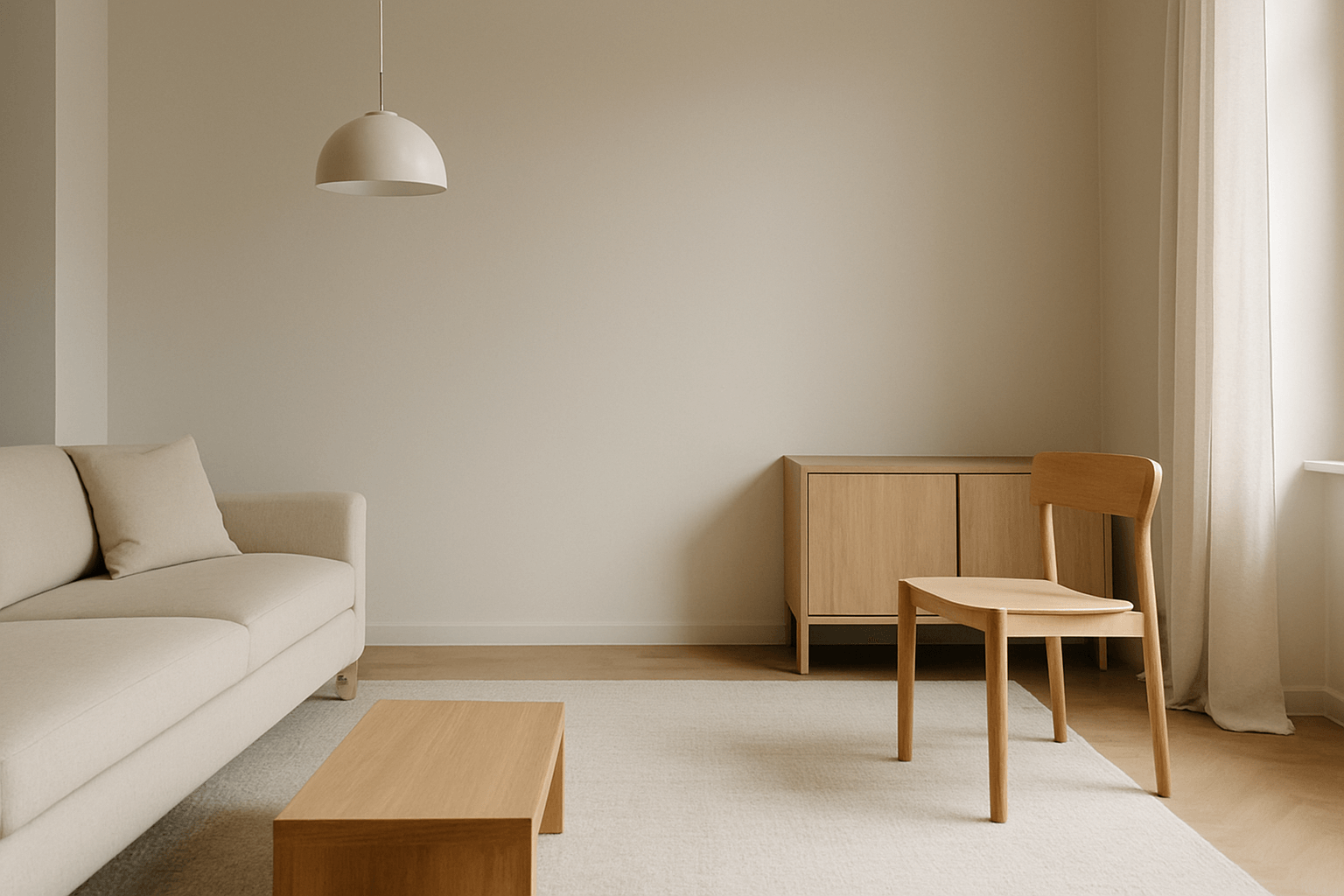What Does Silence Feel Like?
In minimalist design, we talk a lot about space, light, and form — but rarely about sound. Yet the way a room sounds is just as important as how it looks.
Designing around silence doesn’t mean making a space void of sound — it means crafting an atmosphere where sound is soft, intentional, and calming.
Here’s how minimalist interiors can support better acoustic well-being — and why it matters.
1. Why Sound Matters in Minimalism
Without visual clutter, sound becomes more noticeable. Echoes, footsteps, and outside noise can feel louder in sparse, open rooms.
Minimalist spaces are visually calming — but they must also be acoustically gentle to feel fully restful.
2. Soft Materials = Soft Sound
Hard surfaces reflect sound. When a room is all stone, concrete, and glass, it can feel echoey and harsh — even if it’s beautiful.
Soften the space without adding clutter by incorporating:
-
Woven rugs or floor mats
-
Upholstered furniture
-
Heavy linen or cotton curtains
-
Textured wall finishes (like limewash or matte plaster)
These absorb sound subtly and improve acoustic warmth without compromising minimalism.
3. The Power of Negative Acoustic Space
Just like negative visual space, areas with less sound help the rest feel intentional.
Examples:
-
A quiet reading nook away from street noise
-
An entryway with minimal items, allowing breath before entering the main space
-
Letting natural silence define a room, rather than music or media
Stillness becomes part of the architecture.
4. Choose Sound-Mindful Decor
Even in minimalism, a few functional elements can reduce unwanted noise while staying on-brand.
Try:
-
A handmade textile wall hanging
-
A sculptural wood screen that breaks up echo
-
A stack of floor cushions in natural fabrics
Designing for silence doesn't require “more” — just more care in what you choose.
5. Rethink Technology and Ambient Noise
Digital noise can be just as disruptive as visual clutter. Consider:
-
Keeping tech hidden or stored when not in use
-
Using speakers only when needed, not constantly running
-
Creating at least one “device-free” space in your home
Stillness isn’t just physical — it’s sensory.
Final Thought
Minimalism isn't only seen — it’s felt. And silence is part of that feeling.
By designing around sound, not just sight, you create a home that supports deep rest, clear thinking, and a stronger connection to the present.
True calm comes not just from what you see — but from what you don’t hear.
















